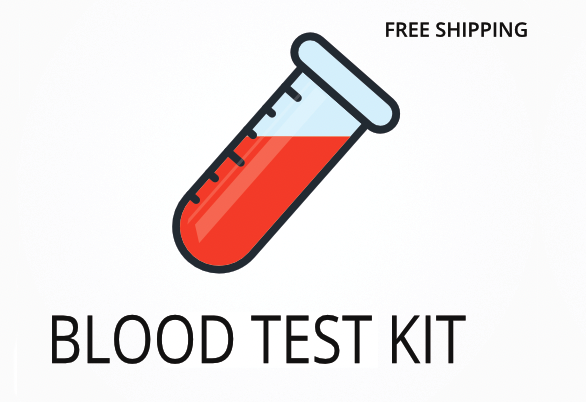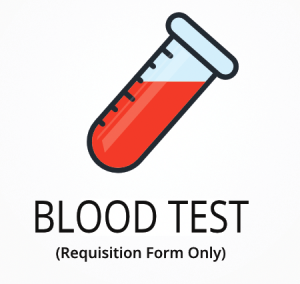Ordering the IgE Inhalant Allergy Basic Test (36) | Great Plains
This test helps identify specific inhalant allergens that may be causing symptoms like sneezing, itchy eyes, nasal congestion, or skin irritation. It measures immunoglobulin E (IgE) antibodies in your blood to pinpoint reactions to 36 common environmental triggers, including pollen, pet dander, dust mites, and molds. Interestingly, some people may have allergic reactions to substances they encounter only seasonally, making it difficult to connect symptoms to a specific cause without testing.
Ordering this test can help you:
- Identify which airborne allergens are causing your symptoms
- Distinguish between allergy and non-allergy related symptoms
- Guide your doctor in creating a targeted allergy management plan
- Reduce unnecessary exposure to specific triggers
- Track changes in your allergic response over time
Who Should Consider Allergy Panel Testing
People who experience frequent sneezing, runny nose, or itchy skin during certain times of the year, or after being around pets or dust, may benefit from this test. For example, someone who notices their eyes water and throat itches every spring, but feels better indoors, could use this test to find out which pollens are causing their symptoms.
Ordering this test may also be helpful if you:
- Have ongoing nasal congestion or sinus pressure that does not improve with over-the-counter remedies
- Experience unexplained skin rashes or hives after cleaning or being outdoors
- Notice coughing or wheezing that worsens at night or after exposure to pets
- Have eczema that flares up in certain environments
- Live in a home with visible mold but do not have obvious allergy symptoms, as hidden reactions can still affect you
Testing for inhalant allergies can help you and your doctor make informed decisions about environmental changes or treatments. Delaying this test may mean continued exposure to allergens, which can make symptoms harder to manage over time. To move forward, order the test to get specific answers about your triggers.
How to Prepare for the Test
Fasting is not required for this test, but always check the test kit instructions for any special preparation steps. Make sure to follow whatever guidance your doctor or healthcare practitioner gives you, as this helps ensure your sample is collected correctly and your results are as useful as possible.
Labs Included When Ordering Your IgE Inhalant Allergy Basic Test (36) | Great Plains
| Test Name | Reference Range | Significance | Low and High Levels of IgE Inhalant Allergy Basic Test (36) |
|---|---|---|---|
| Alder (Speckled) | <0.35 kU/L | Alder pollen is a common spring allergen. This test checks for IgE antibodies that react to alder pollen, which can cause seasonal allergy symptoms. | High levels mean you may have an allergy to alder pollen.
Low levels mean you are unlikely to react to alder pollen. |
| Alternaria | <0.35 kU/L | Alternaria is a mold found indoors and outdoors. This test detects IgE antibodies to Alternaria, which can trigger asthma and respiratory symptoms. | High levels mean you may be sensitive to Alternaria mold.
Low levels mean Alternaria is not likely a trigger for you. |
| Ash (White) | <0.35 kU/L | White ash pollen is a spring allergen. The test measures IgE response to this tree pollen, which can cause sneezing and itchy eyes. | High levels mean you may react to white ash pollen.
Low levels mean white ash is not a likely allergen for you. |
| Aspergillus | <0.35 kU/L | Aspergillus is a common mold. This test checks for IgE antibodies to Aspergillus, which can cause respiratory symptoms and worsen asthma. | High levels mean you may be allergic to Aspergillus mold.
Low levels mean Aspergillus is not a likely cause of your symptoms. |
| Beech (American) | <0.35 kU/L | Beech tree pollen can cause spring allergies. The test measures IgE antibodies to beech pollen, which may lead to sneezing and congestion. | High levels mean you may react to beech pollen.
Low levels mean beech pollen is not a likely allergen for you. |
| Bermuda Grass | <0.35 kU/L | Bermuda grass pollen is a common summer allergen. This test checks for IgE antibodies to Bermuda grass, which can cause sneezing and itchy throat. | High levels mean you may be allergic to Bermuda grass.
Low levels mean Bermuda grass is not a likely trigger for you. |
| Birch (Common Silver) | <0.35 kU/L | Birch pollen is a major spring allergen. The test measures IgE antibodies to birch, which can cause sneezing, runny nose, and itchy eyes. | High levels mean you may react to birch pollen.
Low levels mean birch pollen is not a likely allergen for you. |
| Box Elder (Maple) | <0.35 kU/L | Box elder is a type of maple tree. This test checks for IgE antibodies to box elder pollen, which can cause spring allergy symptoms. | High levels mean you may be allergic to box elder pollen.
Low levels mean box elder is not a likely trigger for you. |
| Burning Bush | <0.35 kU/L | Burning bush pollen can cause seasonal allergies. The test measures IgE antibodies to this plant, which may lead to sneezing and congestion. | High levels mean you may react to burning bush pollen.
Low levels mean burning bush is not a likely allergen for you. |
| Cat | <0.35 kU/L | Cat dander is a common indoor allergen. This test checks for IgE antibodies to cat proteins, which can cause sneezing, itchy eyes, and asthma symptoms. | High levels mean you may be allergic to cats.
Low levels mean cat dander is not a likely trigger for you. |
| Cladosporium | <0.35 kU/L | Cladosporium is a mold found in the air. The test measures IgE antibodies to Cladosporium, which can cause respiratory symptoms and worsen asthma. | High levels mean you may be sensitive to Cladosporium mold.
Low levels mean Cladosporium is not a likely allergen for you. |
| Cocklebur | <0.35 kU/L | Cocklebur pollen is a fall allergen. This test checks for IgE antibodies to cocklebur, which can cause sneezing and nasal congestion. | High levels mean you may react to cocklebur pollen.
Low levels mean cocklebur is not a likely allergen for you. |
| Cockroach | <0.35 kU/L | Cockroach allergens are found in homes. The test measures IgE antibodies to cockroach proteins, which can cause asthma and allergy symptoms. | High levels mean you may be allergic to cockroach allergens.
Low levels mean cockroach is not a likely trigger for you. |
| Cottonwood Tree | <0.35 kU/L | Cottonwood pollen is a spring allergen. This test checks for IgE antibodies to cottonwood, which can cause sneezing and itchy eyes. | High levels mean you may react to cottonwood pollen.
Low levels mean cottonwood is not a likely allergen for you. |
| Dog | <0.35 kU/L | Dog dander is a common indoor allergen. The test measures IgE antibodies to dog proteins, which can cause sneezing, congestion, and skin irritation. | High levels mean you may be allergic to dogs.
Low levels mean dog dander is not a likely trigger for you. |
| Dust Mite (D. pteronyssinus) | <0.35 kU/L | Dust mites are a major indoor allergen. This test checks for IgE antibodies to dust mite proteins, which can cause sneezing, congestion, and eczema. | High levels mean you may be allergic to dust mites.
Low levels mean dust mites are not a likely trigger for you. |
| Elm (White) | <0.35 kU/L | White elm pollen is a spring allergen. The test measures IgE antibodies to elm pollen, which can cause sneezing and itchy eyes. | High levels mean you may react to white elm pollen.
Low levels mean white elm is not a likely allergen for you. |
| Hickory (White) | <0.35 kU/L | White hickory pollen can cause spring allergies. This test checks for IgE antibodies to hickory, which may lead to sneezing and congestion. | High levels mean you may react to hickory pollen.
Low levels mean hickory is not a likely allergen for you. |
| Lamb’s Quarters | <0.35 kU/L | Lamb’s quarters is a weed that releases pollen in late spring and summer. The test measures IgE antibodies to this plant, which can cause sneezing and itchy eyes. | High levels mean you may react to lamb’s quarters pollen.
Low levels mean lamb’s quarters is not a likely allergen for you. |
| Marsh Elder (Rough) | <0.35 kU/L | Marsh elder pollen is a fall allergen. This test checks for IgE antibodies to marsh elder, which can cause sneezing and nasal congestion. | High levels mean you may react to marsh elder pollen.
Low levels mean marsh elder is not a likely allergen for you. |
| Meadow Fescue | <0.35 kU/L | Meadow fescue is a grass that releases pollen in late spring and summer. The test measures IgE antibodies to this grass, which can cause sneezing and itchy eyes. | High levels mean you may react to meadow fescue pollen.
Low levels mean meadow fescue is not a likely allergen for you. |
| Mite (D. farinae) | <0.35 kU/L | D. farinae is a type of dust mite. This test checks for IgE antibodies to this mite, which can cause sneezing, congestion, and eczema. | High levels mean you may be allergic to D. farinae dust mites.
Low levels mean D. farinae is not a likely trigger for you. |
| Mugwort | <0.35 kU/L | Mugwort is a weed that releases pollen in late summer and fall. The test measures IgE antibodies to mugwort, which can cause sneezing and itchy eyes. | High levels mean you may react to mugwort pollen.
Low levels mean mugwort is not a likely allergen for you. |
| Nettle | <0.35 kU/L | Nettle pollen is a summer allergen. This test checks for IgE antibodies to nettle, which can cause sneezing and nasal congestion. | High levels mean you may react to nettle pollen.
Low levels mean nettle is not a likely allergen for you. |
| Oak (White) | <0.35 kU/L | White oak pollen is a spring allergen. The test measures IgE antibodies to oak pollen, which can cause sneezing and itchy eyes. | High levels mean you may react to white oak pollen.
Low levels mean white oak is not a likely allergen for you. |
| Orchard Grass/Cocksfoot | <0.35 kU/L | Orchard grass, also called cocksfoot, is a common grass allergen. This test checks for IgE antibodies to this grass, which can cause sneezing and itchy eyes. | High levels mean you may react to orchard grass pollen.
Low levels mean orchard grass is not a likely allergen for you. |
| Penicillium | <0.35 kU/L | Penicillium is a mold found indoors. The test measures IgE antibodies to Penicillium, which can cause respiratory symptoms and worsen asthma. | High levels mean you may be sensitive to Penicillium mold.
Low levels mean Penicillium is not a likely allergen for you. |
| Pigweed | <0.35 kU/L | Pigweed pollen is a late summer and fall allergen. This test checks for IgE antibodies to pigweed, which can cause sneezing and nasal congestion. | High levels mean you may react to pigweed pollen.
Low levels mean pigweed is not a likely allergen for you. |
| Pine Ponderosa | <0.35 kU/L | Ponderosa pine pollen is a spring allergen. The test measures IgE antibodies to pine pollen, which can cause sneezing and itchy eyes. | High levels mean you may react to pine pollen.
Low levels mean pine pollen is not a likely allergen for you. |
| Plantain (English) | <0.35 kU/L | English plantain is a weed that releases pollen in late spring and summer. This test checks for IgE antibodies to plantain, which can cause sneezing and itchy eyes. | High levels mean you may react to plantain pollen.
Low levels mean plantain is not a likely allergen for you. |
| Privet | <0.35 kU/L | Privet is a shrub that releases pollen in late spring and summer. The test measures IgE antibodies to privet, which can cause sneezing and nasal congestion. | High levels mean you may react to privet pollen.
Low levels mean privet is not a likely allergen for you. |
| Ragweed (Short) | <0.35 kU/L | Short ragweed pollen is a major fall allergen. This test checks for IgE antibodies to ragweed, which can cause sneezing, runny nose, and itchy eyes. | High levels mean you may react to ragweed pollen.
Low levels mean ragweed is not a likely allergen for you. |
| Rye (Perennial) | <0.35 kU/L | Perennial rye is a grass that releases pollen in late spring and summer. The test measures IgE antibodies to rye, which can cause sneezing and itchy eyes. | High levels mean you may react to rye pollen.
Low levels mean rye is not a likely allergen for you. |
| Sheep Sorrel | <0.35 kU/L | Sheep sorrel is a weed that releases pollen in late spring and summer. This test checks for IgE antibodies to sheep sorrel, which can cause sneezing and itchy eyes. | High levels mean you may react to sheep sorrel pollen.
Low levels mean sheep sorrel is not a likely allergen for you. |
| Sycamore (American) | <0.35 kU/L | American sycamore pollen is a spring allergen. The test measures IgE antibodies to sycamore, which can cause sneezing and itchy eyes. | High levels mean you may react to sycamore pollen.
Low levels mean sycamore is not a likely allergen for you. |
| Timothy Grass | <0.35 kU/L | Timothy grass is a common grass allergen. This test checks for IgE antibodies to timothy grass, which can cause sneezing, itchy eyes, and nasal congestion. | High levels mean you may react to timothy grass pollen.
Low levels mean timothy grass is not a likely allergen for you. |
Reference ranges may change slightly as labs update their methods or as new research becomes available.
IgE Inhalant Allergy Basic Test (36) FAQ
Is there IgE Inhalant Allergy Basic Test (36) testing near me?
This test is provided as a kit that can be collected at a local draw site—check the draw location link at the top of the page. For those with ongoing allergy symptoms, having a nearby collection site makes it easier to get tested quickly and avoid delays in finding out which allergens are affecting you.
How do I interpret the test results?
While your treating physician should review your results, you can also use our one-on-one test results review service with our clinical team for a detailed explanation and next steps.
What is the cost of the test?
The price listed for this test includes standard shipping to you and return shipping to the lab, but draw fees may apply. Ordering this test can help you pinpoint which allergens are causing your symptoms, so you can start managing them sooner.
How often should I retest?
Retesting is usually recommended every 1-2 years, or sooner if your symptoms change or after starting a new allergy treatment. Regular testing helps track changes in your allergic response and guides your doctor in adjusting your care.
How accurate is the test?
This test uses immunoassay technology to measure specific IgE antibodies, with a specificity of 98% and sensitivity of 96%. TrueHealthLabs.com partners with CLIA-certified and CAP-certified laboratories to uphold rigorous testing standards for dependable results.
Important Notes
- This test can not be collected or mailed from New York State. Contact us with questions.
Medical Review Board
Reviewed by Jeff Donohue M.D. from Body Logic and Brady Hurst DC, CCCN. Written by True Health Lab’s team of editorial health contributors.
Disclaimer: This information is for educational purposes only and not intended as medical advice. Consult your healthcare provider for personalized guidance.
Why Customers Trust True Health Labs - What People are saying
Also rated 4.6 out of 5 based on 3452 ShopperApproved reviews- See all TrueHealthLabs.com reviews.







